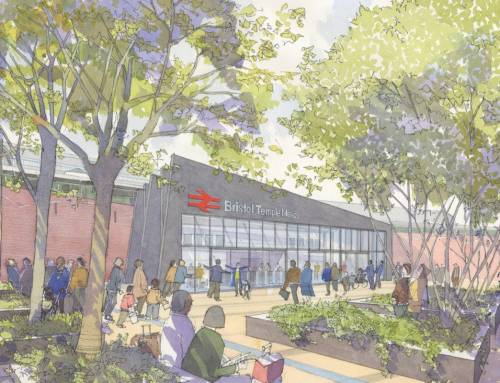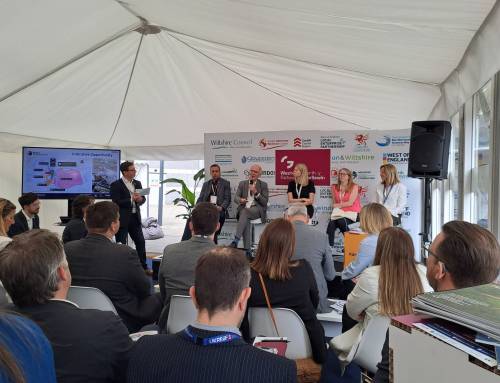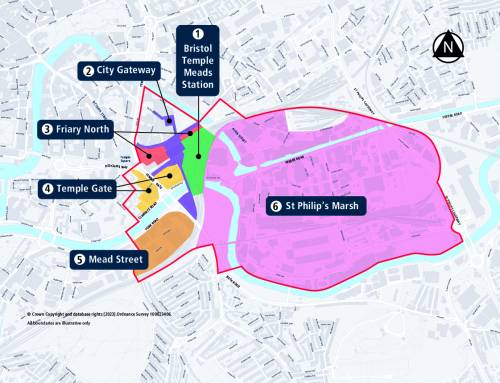
A Spatial Framework to guide and shape the future development of the Bristol Temple Quarter Enterprise Zone has been adopted by Cabinet.
The framework shows a liveable urban quarter with work hubs, residential apartments, the new arena, and an expanded transport interchange area with a world class station at its heart. It will be used as an important planning tool to guide development in the zone over 25 years, while being a living document that will be updated as the area changes and new challenges and opportunities emerge.
Following consultation on the framework in March, changes were made to the mix of residential and commercial space in the zone, reflecting the growing need to deliver more housing in the city and to ensure that Temple Quarter becomes a lively mixed community.
Guidance has also been strengthened to increase tree coverage and greater emphasis has been placed on accessibility, along with additional opportunities for formal and informal play spaces near Totterdown Basin and Avon Street Market.
Cabinet also approved the Sustainable Urban Mobility Plan, a strategic transport plan that focusses on how walking, cycling and public transport use could be encouraged to and within the zone and the Public Realm Guide that sets out the council’s expectations for the design of people-friendly streets and spaces.
Mayor of Bristol Marvin Rees said:
“I welcome the Spatial Framework, which sets out the vision of a place welcoming to all, with Temple Meads becoming a true gateway to the city in contrast to the poor arrival experience that people have experienced for too long.
In time, the Bristol Temple Quarter Enterprise Zone will become a new urban quarter offering access to jobs, much needed housing and leisure while making it easier for people to connect between the station, the city centre and surrounding communities.”
Cabinet’s decision on the Spatial Framework follows a decision in September to approve proposals to expand the Bristol Temple Quarter Enterprise Zone to include parts of Redcliffe and other sites close to the existing boundary. These proposals are due to be submitted by the West of England Local Enterprise Partnership for consideration by government.
Progress of the Enterprise Zone to date can be seen on an interactive timeline.









